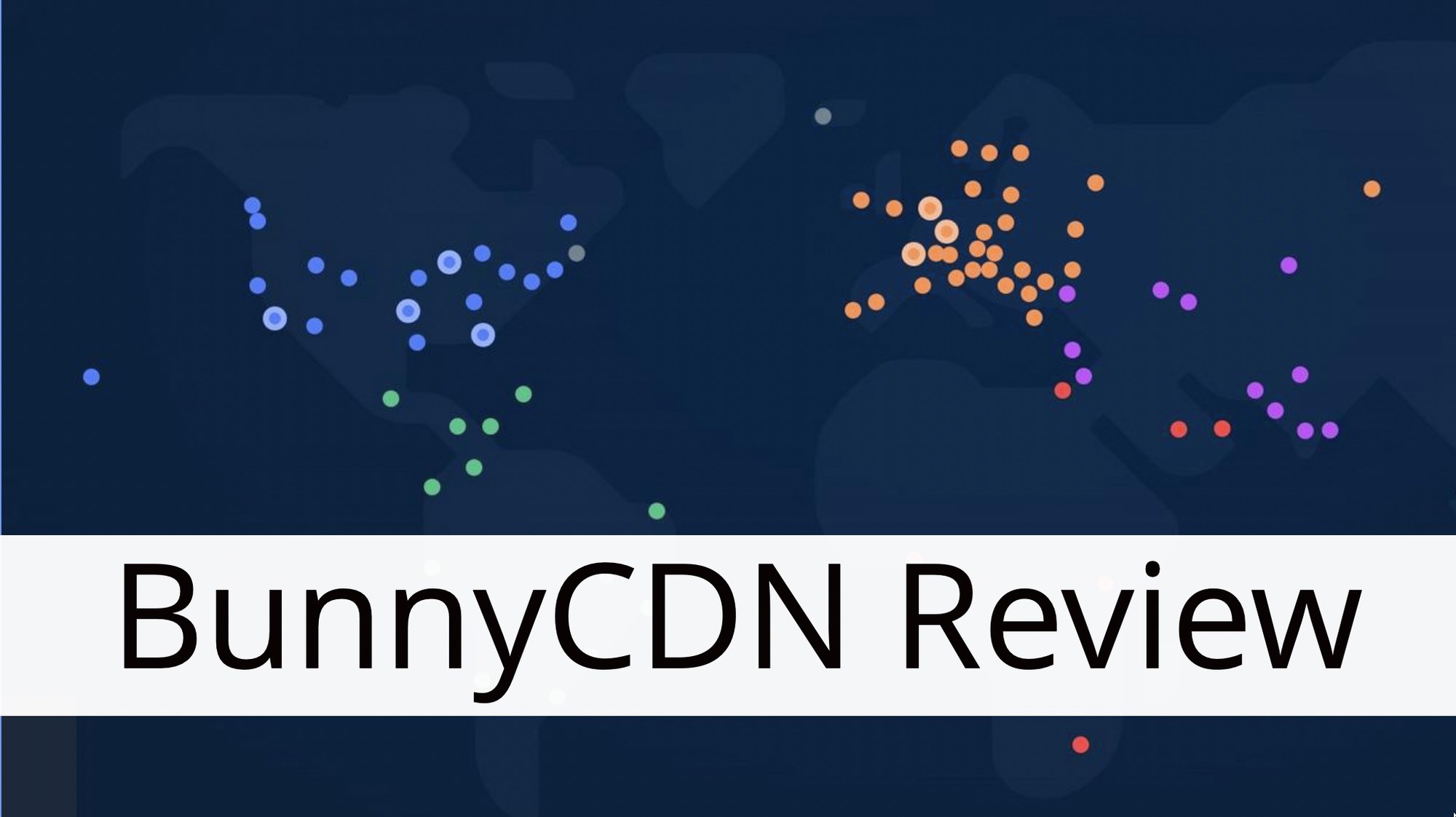In today’s digital landscape, having a strong online presence is crucial for the success of any business or individual. One of the most effective ways to increase your website’s visibility and drive more traffic is through search engine optimization (SEO). And when it comes to SEO for websites, WordPress is the platform of choice for millions of users worldwide.
🔍 But what exactly is SEO, and why is it so important for WordPress sites? In this article, we’ll explore the ins and outs of WordPress SEO tactics, uncovering the key strategies you need to implement to boost your website’s traffic and improve its overall performance.
🎯 So, whether you’re a seasoned WordPress user or just getting started, get ready to dive into the world of WordPress SEO and learn how to maximize your website’s potential. From selecting an SEO-friendly theme to optimizing your content and building high-quality backlinks, we’ve got you covered. Let’s get started!
Understanding WordPress SEO
Introduction:
In today’s digital age, having a well-optimized website is crucial for businesses and individuals alike. When it comes to WordPress sites, understanding SEO (Search Engine Optimization) can significantly impact their visibility and success in search engine rankings. In this article, we will delve into the world of WordPress SEO, exploring what it is and why it’s essential for your WordPress website.
What is SEO?
SEO refers to the process of optimizing a website to increase its visibility in search engine results. When you search for something on Google or any other search engine, the websites that appear at the top of the results have often been optimized for SEO. This optimization involves various techniques and strategies to make your website more attractive to search engines and users.
Popular SEO techniques include:
- Keyword Research: Identifying and targeting the right keywords that reflect what users are searching for.
- On-Page Optimization: Optimizing elements such as titles, headings, meta descriptions, and content to improve search engine visibility.
- Link Building: Earning high-quality links from other websites, indicating the credibility and relevance of your content.
- Site Speed and Performance: Ensuring your website loads quickly and provides a seamless browsing experience.
- Mobile Optimization: Optimizing your website for mobile devices to accommodate the ever-growing mobile user base.
Why is SEO Important for WordPress Sites?
WordPress is the most popular content management system (CMS) in the world, powering over 40% of all websites on the internet. While WordPress itself is SEO-friendly, it still requires additional optimization to rank well in search engine results. Here are a few reasons why SEO is crucial for your WordPress site:
- Increased Visibility: By implementing effective SEO strategies, you can improve your website’s visibility in search engine results. This means more organic traffic and potential customers finding their way to your WordPress site.
- Better User Experience: SEO involves optimizing your website’s structure, content, and performance, which ultimately enhances the user experience. A well-structured site with valuable content will keep visitors engaged and encourage them to explore further.
- Long-Term Traffic: SEO efforts, when done correctly, can generate long-term, sustainable traffic to your WordPress site. Unlike paid advertising, where traffic stops when the budget runs out, SEO can consistently bring organic traffic to your site.
- Build Trust and Credibility: When your WordPress site appears on the first page of search results, it instills trust and credibility in the eyes of users. People tend to trust websites that rank higher, viewing them as reputable and reliable sources of information.
- Cost-Effective Marketing: SEO is a cost-effective marketing strategy in the long run. While it may require initial investment and time, the organic traffic it generates can save you money on paid advertising in the future.
By understanding and implementing SEO best practices for your WordPress site, you can drive relevant organic traffic, improve user experience, and achieve your online objectives effectively.
Stay tuned for the next sections of this article, where we will explore specific SEO techniques and strategies tailored for WordPress sites.
Key WordPress SEO Tactics
In today’s digital landscape, having a strong online presence is crucial for the success of any business or website. And when it comes to optimizing your website for search engines, WordPress offers a plethora of tools and plugins that can help you in your quest for higher rankings. In this article, we will explore some key SEO tactics that you can implement on your WordPress website to improve your visibility and drive more organic traffic.
Selecting an SEO Friendly Theme
Choosing the right theme for your WordPress website is the first step towards optimizing it for search engines. An SEO-friendly theme ensures that your website is built on a solid foundation that search engines can easily crawl and understand. Here are a few factors to consider when selecting a theme:
- Clean Code: Look for a theme that has well-structured and optimized code. Clean code makes it easier for search engine bots to crawl and index your website.
- Mobile Responsiveness: With more and more people using mobile devices to browse the internet, it’s essential that your theme is mobile-friendly. A mobile-responsive theme not only provides a better user experience but also helps with your website’s rankings.
- Page Speed: Website speed is a critical factor in SEO. Choose a theme that is lightweight and optimized for fast loading times. This will not only improve your SEO but also enhance the overall user experience.
- Schema Markup: Schema markup is code that you can add to your website to help search engines understand your content better. Look for a theme that has built-in support for Schema markup.
Installing an SEO Plugin
One of the great advantages of using WordPress is the wide range of plugins available to enhance your website’s functionality. When it comes to SEO, there are a few plugins that can make a significant difference in optimizing your website for search engines. The most popular SEO plugin for WordPress is Yoast SEO.
Yoast SEO allows you to easily optimize your content for targeted keywords, generate XML sitemaps, and control how your website appears in search engine results. It also provides recommendations on improving your on-page SEO factors such as meta tags, headings, and keyword usage. Installing and configuring an SEO plugin like Yoast SEO is a crucial step in optimizing your WordPress website for search engines.
Creating SEO Friendly Content
Content is king when it comes to SEO. Creating high-quality, useful, and engaging content is not only essential for your website visitors but also for search engines. Here are a few tips for creating SEO-friendly content:
- Keyword Research: Before writing your content, conduct keyword research to identify the terms and phrases that your target audience is searching for. Incorporate these keywords naturally throughout your content to improve your chances of ranking higher in search results.
- Unique and Original: Make sure your content is unique and original. Avoid duplicating content from other websites, as search engines may penalize you for it.
- Meta Tags: Optimize your meta tags, including the page title and meta description, to provide concise and compelling summaries of your content. These tags appear in search engine results and can influence click-through rates.
- Headings and Formatting: Use headings (H1, H2, H3, etc.) to structure your content and make it easier for search engines to understand. Additionally, use bullet points, numbered lists, and bold/italic text to highlight important information and improve readability.
- Internal and External Links: Incorporate internal links to other relevant pages on your website and external links to authoritative sources. This not only helps with navigation but also signals to search engines that your content is well-researched and trustworthy.
Focus on Page Speed
Page speed is a crucial factor in SEO. Search engines give preference to websites that load quickly and provide a smooth user experience. Here are a few ways to improve your website’s page speed:
- Optimize Images: Compress and optimize images on your website to reduce file size without compromising quality. Use image optimization plugins like Smush to automate this process.
- Minify CSS and JavaScript: Minifying your CSS and JavaScript files removes unnecessary characters and white spaces, reducing file size and improving load times.
- Caching: Implement a caching solution, such as a caching plugin or a content delivery network (CDN), to store static versions of your website’s pages and serve them to visitors more quickly.
- Hosting Provider: Choose a reliable and high-performance hosting provider that can handle your website’s traffic efficiently. A good hosting provider can significantly improve your website’s overall speed.
Incorporating these page speed optimization techniques will not only enhance your website’s user experience but also boost your SEO rankings.
Mobile Responsiveness
With the increasing use of mobile devices, having a mobile-responsive website is essential for SEO. Search engines prioritize mobile-friendly websites in their search results. Here are a few tips to ensure your WordPress website is mobile-responsive:
- Responsive Design: Choose a responsive theme or ensure your current theme is mobile-friendly. Responsive design allows your website to adapt to different screen sizes and devices.
- Mobile Usability: Test your website’s mobile usability using Google’s Mobile-Friendly Test. This tool identifies any issues that may impact your website’s mobile usability, such as font size, clickable elements, and viewport settings.
- Mobile Menu: Optimize your website’s navigation for mobile devices. Use a mobile menu that is easy to navigate and accessible on smaller screens.
By prioritizing mobile responsiveness, you not only provide a better user experience for your mobile visitors but also improve your website’s SEO performance.
In the upcoming sections, we will explore further SEO tactics for optimizing your WordPress website, including securing it with HTTPS, integrating social media, and utilizing XML sitemaps. Stay tuned!
On-Page SEO Tactics
Search Engine Optimization (SEO) is a crucial aspect of improving a website’s visibility and driving organic traffic. While off-page SEO involves strategies like backlink building and social media marketing, on-page SEO focuses on optimizing the content and structure of individual web pages. In this article, we will explore some effective on-page SEO tactics that can help boost your website’s search rankings.
Keyword Optimization
Keywords play a significant role in on-page SEO, as they help search engines understand the context and relevance of your content. By strategically incorporating keywords into your website’s copy, you can increase its visibility for specific search queries. Here are some tips for effective keyword optimization:
- Keyword Research: Conduct thorough keyword research to identify relevant keywords that align with the intent of your target audience. Use keyword research tools like Google Keyword Planner or SEMrush to discover valuable keyword insights.
- Keyword Placement: Once you have your target keywords, strategically place them in the following elements of your webpage:
- Headings and subheadings
- Opening and closing paragraphs
- Image alt tags
- Meta titles and descriptions
- Avoid Keyword Stuffing: While it’s important to include keywords, avoid overusing them in your content. Google penalizes websites that engage in keyword stuffing, which can negatively impact your search rankings. Instead, focus on creating high-quality, engaging content that naturally incorporates your keywords.
Meta Descriptions
Meta descriptions provide a concise summary of the content on a webpage. While they don’t directly affect search rankings, they play a crucial role in attracting users to click on your website’s link in the search results. Follow these tips for optimizing your meta descriptions:
- Keep it Concise: Aim for a meta description length of around 150-160 characters. This ensures that the entire description is visible in the search results, increasing the likelihood of clicks.
- Include Keywords: Incorporate relevant keywords naturally into your meta description. This helps search engines understand the content of your webpage and increases its chances of appearing in relevant search results.
- Provide Value: Craft a compelling and informative meta description that entices users to click on your website’s link. Highlight the unique selling points of your content and promise value to the reader.
Title Tags
Title tags, also known as HTML title elements, are the clickable headlines that appear in search engine results. They provide users with an overview of what to expect when they visit your webpage. Here’s how you can optimize your title tags:
- Include Target Keywords: Incorporate your target keywords into the title tag to improve its relevance to search queries. However, make sure the title tag remains natural and compelling to entice users to click.
- Keep it Concise: Aim for a title tag length of around 50-60 characters to ensure that it is fully displayed in search results. If the title tag exceeds this limit, it may get truncated, potentially affecting click-through rates.
- Be Descriptive and Engaging: Craft an attention-grabbing title that accurately reflects the content of your webpage and entices users to click. Highlight the unique value proposition of your content to stand out from the competition.
Internal Linking
Internal linking refers to the practice of linking to other pages within your website. It not only helps search engines discover and index your content but also improves the user experience by providing additional relevant information. Here’s how you can make the most out of internal linking:
- Use Descriptive Anchor Text: When adding internal links, use descriptive anchor text that accurately reflects the content of the linked page. This helps search engines understand the context of the linked page and improves the user experience.
- Link to Relevant Pages: Only link to pages that are relevant and provide additional value to the reader. Avoid excessive internal linking, as it can confuse both search engines and users.
- Create a Logical Site Structure: Organize your website’s pages in a logical manner with clear hierarchy and categories. This helps search engines understand the structure of your website and improves crawlability.
Image Optimization
Images not only improve the visual appeal of your website but also play a role in SEO. Optimizing your images can help improve page load times and enhance user experience. Here are some tips for image optimization:
- Alt Text: Always include descriptive and keyword-rich alt text for your images. Alt text not only helps search engines understand the content of the image but also provides an alternative text description for users who can’t view the image.
- File Size and Compression: Compress your images to reduce file sizes without compromising quality. Large image files can slow down page load times, negatively impacting user experience and search rankings.
- Image File Names: Use descriptive file names that accurately describe the content of the image. This helps search engines understand the context of the image and improves its chances of appearing in relevant image search results.
By implementing these on-page SEO tactics, you can improve your website’s visibility, attract more organic traffic, and deliver a seamless user experience. Remember to focus on creating high-quality, engaging content that incorporates relevant keywords naturally and provides value to your target audience.
Off-Page SEO Tactics
Off-page SEO tactics are an essential part of any successful digital marketing strategy. While on-page SEO focuses on optimizing your website’s content and structure, off-page SEO is all about building your online presence and authority. In this section, we will explore some effective off-page SEO tactics that can help boost your website’s visibility and improve your search engine rankings.
Building High-Quality Backlinks
One of the most important off-page SEO tactics is building high-quality backlinks. Backlinks, or inbound links, are links from other websites that point to your site. Search engines view backlinks as a vote of confidence in your content, and they can significantly impact your website’s authority and visibility.
But not all backlinks are created equal. It’s crucial to focus on acquiring high-quality backlinks from reputable and relevant sources. Here are some tips to build high-quality backlinks:
- Guest Post on Authority Websites: Writing guest posts on authoritative websites in your industry not only helps you gain exposure to a new audience but also allows you to include a backlink to your site within the content.
- Create Shareable Content: Crafting high-quality and shareable content increases the chances of other websites linking back to your site as a valuable resource.
- Leverage Social Bookmarking Sites: Submitting your website or blog posts to popular social bookmarking sites like Reddit, Digg, or StumbleUpon can drive traffic and generate backlinks.
Learn more about building high-quality backlinks here.
Social Media Promotion
In today’s digital world, social media plays a crucial role in off-page SEO. Social media platforms provide excellent opportunities to connect with your audience, increase brand awareness, and drive traffic to your website. Here are some effective social media promotion tactics for off-page SEO:
- Create Engaging Content: Share engaging and valuable content on your social media channels that encourage likes, shares, and comments, which can help boost your website’s visibility.
- Build a Strong Following: Focus on growing your social media following by engaging with your audience, participating in relevant conversations, and running targeted advertising campaigns.
- Encourage Social Sharing: Make it easy for visitors to your website to share your content on their preferred social media platforms by including social sharing buttons on your webpages.
Check out our guide on social media promotion for off-page SEO here.
Guest Blogging
Guest blogging is an excellent way to expand your online reach and build backlinks to your website. By writing guest posts for other websites in your niche, you can tap into their audience and establish yourself as an industry expert. Here are some tips for successful guest blogging:
- Find Relevant Websites: Look for authoritative websites in your industry that accept guest contributions.
- Craft High-Quality Content: Write informative and valuable articles that resonate with the target audience of the website you’re guest blogging for.
- Include a Backlink to Your Site: When writing a guest post, include a backlink to your website within the content or author bio.
Learn more about guest blogging and its benefits here.
Influencer Outreach
Another effective off-page SEO tactic is influencer outreach. Influencers are individuals with a large following and influence in your industry. Partnering with influencers can help you gain exposure, increase brand credibility, and drive traffic to your website. Here are some steps to implement influencer outreach:
- Identify Relevant Influencers: Research and identify influencers who align with your industry and target audience.
- Engage and Collaborate: Build relationships with influencers by engaging with their content, sharing their posts, and offering collaboration opportunities.
- Co-create Content: Collaborate with influencers to co-create content, such as guest blog posts, podcasts, or social media campaigns.
Read more about influencer outreach strategies here.
Incorporating these off-page SEO tactics into your digital marketing strategy can help improve your website’s visibility, increase organic traffic, and boost your search engine rankings. Remember to focus on building high-quality backlinks, leveraging social media promotion, engaging in guest blogging, and implementing influencer outreach. Stay tuned for more insights on SEO strategies in our upcoming sections.
WordPress SEO Tools and Plugins
In today’s competitive online landscape, it’s essential to optimize your WordPress website for search engines. Luckily, there are several powerful tools and plugins available that can take your SEO efforts to the next level. Whether you’re an experienced SEO professional or just starting out, these tools can help you boost your website’s visibility and rankings in search engine results. In this article, we’ll explore some of the most popular and effective WordPress SEO tools and plugins, and how they can benefit your website.
Yoast SEO
When it comes to WordPress SEO plugins, Yoast SEO is undoubtedly the leader in the market. With over 5 million active installations, it’s trusted by website owners, bloggers, and businesses worldwide. Yoast SEO provides a comprehensive suite of tools to help you optimize your content, metadata, and website structure for search engines. Here are some key features of Yoast SEO:
- Real-time Content Analysis: Yoast SEO analyzes your content as you create it and provides valuable suggestions for improving its SEO-friendliness, including keyword optimization, readability, and more.
- XML Sitemap Generation: The plugin generates a sitemap for your website, making it easier for search engines to crawl and index your pages.
- Title and Meta Description Templating: Yoast SEO allows you to customize and optimize your title tags and meta descriptions for each page, helping you improve click-through rates in search engine results.
- Social Media Integration: The plugin provides options to optimize your content for social media platforms, ensuring that your website looks great when shared on social networks.
SEMRush
For those looking for a more advanced SEO toolkit, SEMRush is an excellent choice. This powerful tool not only helps you analyze and optimize your website’s SEO performance but also allows you to spy on your competitors. Here are some key features of SEMRush:
- Keyword Research: SEMRush provides a comprehensive keyword research tool that helps you identify the right keywords to target, ensuring that your content ranks well in search engine results.
- Competitive Analysis: With SEMRush, you can analyze your competitors’ websites and identify their top-performing keywords, backlinks, and content strategies. This valuable information can help you gain a competitive edge in your niche.
- Backlink Analysis: SEMRush allows you to analyze your own website’s backlink profile as well as your competitors’, helping you identify opportunities for building high-quality backlinks.
Google Search Console
While not a plugin per se, Google Search Console is an essential tool for any website owner looking to improve their SEO. This free tool provided by Google gives you valuable insights into your website’s performance in search engine results. Here’s how Google Search Console can benefit your SEO efforts:
- Indexing Status: The tool gives you a detailed overview of how Google is indexing your website, including the number of indexed pages, crawl errors, and more.
- Search Analytics: Google Search Console provides valuable data on the keywords that are driving traffic to your website, helping you optimize your content accordingly.
- Sitemap Submission: You can submit your website’s sitemap to Google Search Console, ensuring that all your pages are crawled and indexed by Google.
MonsterInsights
Google Analytics is a must-have tool for tracking and analyzing your website’s performance. MonsterInsights takes it a step further by integrating Google Analytics directly into your WordPress dashboard. Here’s what makes MonsterInsights a popular choice:
- Easy Setup: MonsterInsights offers a simple setup process, allowing you to connect your website with Google Analytics in just a few clicks.
- Detailed Tracking: The plugin provides in-depth data and insights about your website’s visitors, including demographics, behavior, popular content, and more.
- eCommerce Tracking: If you run an online store, MonsterInsights allows you to track your eCommerce performance, including revenue, conversion rates, and product performance.
Ahrefs
Ahrefs is a comprehensive SEO toolset that covers various aspects of SEO, including keyword research, backlink analysis, content analysis, and more. Here’s why Ahrefs is highly regarded by SEO professionals:
- Keyword Explorer: Ahrefs’ Keyword Explorer provides you with accurate keyword data, including search volume, keyword difficulty, and more, helping you find profitable keywords to target.
- Site Audit: The tool can crawl your website and identify any technical SEO issues that may be impacting your website’s performance in search engine results.
- Backlink Analysis: Ahrefs boasts one of the most extensive backlink databases, allowing you to analyze your backlink profile and identify opportunities for building high-quality backlinks.
These are just a few examples of the many WordPress SEO tools and plugins available to supercharge your website’s SEO. By leveraging the power of these tools, you can optimize your website, improve its visibility in search engine results, and drive more organic traffic to your WordPress site.
Monitoring Your Site’s SEO Performance
In today’s digital landscape, monitoring the performance of your website’s SEO is crucial for maintaining a strong online presence and attracting valuable organic traffic. By regularly assessing your site’s SEO performance, you can identify areas for improvement, capitalize on opportunities, and stay ahead of the ever-changing SEO landscape. Monitoring your site’s SEO performance involves tracking traffic and user engagement, utilizing tools like Google Analytics to assess your site’s overall health, and staying updated with the latest SEO trends.
Monitoring Traffic and User Engagement
Tracking the amount of traffic your website receives and analyzing user engagement metrics can provide valuable insights into the effectiveness of your SEO efforts. By monitoring these key indicators, you can gauge the performance of your site and make data-driven decisions to optimize its visibility and usability. Here are a few essential metrics to keep an eye on:
- Organic Traffic: This represents the number of visitors who found your website through search engine results. Monitoring organic traffic gives you a clear understanding of how well your site is ranking in search engine results pages (SERPs).
- Bounce Rate: The bounce rate is the percentage of visitors who leave your site without interacting with any other pages. A high bounce rate may indicate that visitors are not finding what they are looking for or that your site’s usability needs improvement.
- Average Time on Page: This metric measures how long visitors spend on each page of your website. It can provide insights into the quality and relevance of your content. If users spend a significant amount of time on a particular page, it indicates that the content is engaging and valuable.
- Conversion Rate: The conversion rate represents the percentage of visitors who complete a desired action, such as making a purchase or filling out a form. Monitoring this metric allows you to evaluate the effectiveness of your conversion optimization strategies.
Use Google Analytics to Assess SEO Health
One powerful tool for monitoring your site’s SEO performance is Google Analytics. This free platform provides a wealth of data and insights that can help you evaluate the health of your site’s SEO. Here are a few ways you can use Google Analytics to assess your site’s SEO performance:
- Track Organic Traffic: Google Analytics allows you to track the number of visitors who found your website through organic search. By monitoring this metric over time, you can determine whether your SEO efforts are paying off and identify areas for improvement.
- Analyze User Behavior: Google Analytics provides detailed reports on user behavior, such as bounce rate, time on page, and pages per session. Analyzing this data can help you understand how users navigate your site and identify opportunities to improve user experience.
- Set and Track Goals: Setting goals in Google Analytics allows you to measure specific actions or conversions on your site. By tracking goal completions, you can assess the effectiveness of your SEO strategies in driving desired user actions.
Staying Updated with SEO Trends
SEO is a constantly evolving field, with search engines regularly updating their algorithms and introducing new ranking factors. To stay ahead of the game, it’s essential to stay updated with the latest SEO trends and best practices. Here are a few ways to do that:
- Follow Industry Experts and Blogs: Stay connected with industry experts and reputable SEO blogs to stay informed about the latest trends, algorithm updates, and best practices. Some popular SEO blogs include Moz, Search Engine Journal, and Neil Patel.
- Attend SEO Conferences and Webinars: Participating in SEO conferences and webinars is a great way to gain insights from industry leaders and stay up to date with the latest SEO strategies. These events often feature presentations and workshops covering a wide range of SEO topics.
- Experiment and Adapt: In the ever-changing world of SEO, it’s crucial to be adaptable and willing to experiment. Test different strategies, monitor the results, and adapt your approach based on what works best for your website and target audience.
By monitoring your site’s SEO performance, using tools like Google Analytics, and staying updated with the latest SEO trends, you can ensure that your website remains visible, relevant, and optimized for search engines. Keeping a close eye on your SEO health will enable you to make informed decisions, attract valuable organic traffic, and ultimately enhance your online presence. So, embrace the world of SEO monitoring, and watch your website flourish in the search engine rankings! 🚀
Conclusion
In conclusion, implementing effective WordPress SEO tactics is crucial for increasing website traffic and improving your online visibility. By understanding and integrating key SEO strategies, such as selecting an SEO-friendly theme, installing an SEO plugin, creating engaging and optimized content, focusing on page speed and mobile responsiveness, and utilizing social media integration, you can enhance your website’s performance in search engine rankings.
Furthermore, incorporating on-page SEO tactics like keyword optimization, meta descriptions, title tags, internal linking, and image optimization can further boost your website’s visibility and engagement.
Off-page SEO tactics, such as building high-quality backlinks, social media promotion, guest blogging, and influencer outreach, can also contribute to improving your website’s reputation and driving more traffic.
To streamline your SEO efforts, consider using popular WordPress SEO tools and plugins like Yoast SEO, SEMRush, Google Search Console, MonsterInsights, and Ahrefs. These tools provide valuable insights and analytics to help you optimize your website more efficiently.
Monitoring your site’s SEO performance is essential to ensure continuous improvement. By regularly monitoring traffic, user engagement, and utilizing tools like Google Analytics, you can assess your website’s SEO health and make informed decisions for optimization.
Stay updated with the latest SEO trends and industry best practices to stay ahead of the competition and maintain your website’s rankings.
Remember, with Managed-WP, a premium managed WordPress cloud hosting platform, you can simplify your website’s infrastructure, enjoy freedom in digital experiences, as well as access expert 24/7/365 problem-solving. Discover the benefits of Managed-WP and take your WordPress website to new heights. Learn more.
With these WordPress SEO tactics and the support of Managed-WP, you can optimize your website, attract more organic traffic, and achieve your online goals. Start implementing these strategies today and watch your website’s visibility soar!
Frequently Asked Questions
- What are some effective WordPress SEO tactics to increase website traffic?
Some effective WordPress SEO tactics to increase website traffic include: optimizing meta titles and descriptions, using relevant keywords in your content, improving website speed and performance, creating high-quality and shareable content, building high-quality backlinks, optimizing images, and utilizing social media to promote your content.
- Is it necessary to use an SEO plugin for WordPress to implement these tactics?
While it’s not mandatory to use an SEO plugin, it is highly recommended as it simplifies the implementation of SEO tactics. SEO plugins like Yoast SEO or Rank Math provide valuable features and guidance to optimize your content and improve your website’s search engine visibility.
- How can optimizing meta titles and descriptions help in increasing website traffic?
Optimizing meta titles and descriptions with relevant keywords can attract more clicks from search engine users. Compelling and keyword-rich meta titles and descriptions can improve your website’s visibility in search engine results, leading to higher click-through rates and ultimately increased website traffic.
- Why is website speed important for SEO and traffic generation?
Website speed is crucial for SEO and traffic generation because a slow-loading website can lead to higher bounce rates and lower search engine rankings. Improving website speed not only enhances user experience but also increases the chances of search engines crawling and indexing your website more frequently.
- How can social media help in increasing website traffic?
Social media platforms provide an opportunity to promote your content and reach a wider audience. By sharing your blog posts, articles, or website pages on social media, you can attract more visitors, engage with your audience, and potentially drive them to your website, thus increasing traffic.



















